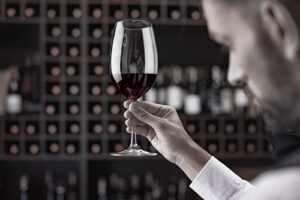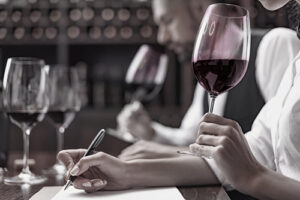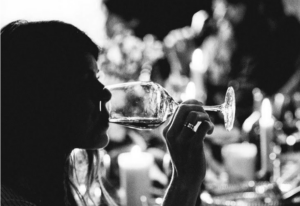The world of wine has a wonderful richness and diversity that captivates you as soon as you delve into it. The more you know, the more you enjoy trying new things, traveling to visit wineries and vineyards, and immersing yourself in one of the most beautiful and exciting industries in the world. Today, we would like to tell you how to taste wine, its phases, and everything you need to know to make it an unforgettable experience.
The Phases of Wine Tasting In every glass, you will encounter a series of unique aromas, textures, and colors. These three elements are the ones you will need to focus on isolating and identifying so that you can understand and discover the richness of the wine. Thus, smell, taste, and vision will be the three main senses involved in this process. Below, we provide a step-by-step explanation in the proper order.

The first step is to uncork the bottle and pour a little wine into a suitable tasting glass. Hold the glass by its base and tilt it about 45 degrees over a white background to differentiate the various shades and tones clearly.
The color is the main element to observe during this phase and will give you a fairly accurate idea of the wine’s age. A bright cherry color is directly associated with young wines. On the other hand, when the hue turns slightly orange or garnet, the wine has aged significantly. This applies to red wines. For white wines, the bright straw-yellow tones of young wines gradually give way to golden hues, characteristic of barrel-fermented whites. Lastly, rosé wines transition from vibrant pink shades to onion skin tones as they evolve.
Next, observe the wine’s depth or “layer.” This doesn’t always correlate with age, but in some cases, it does, as lighter layers are often associated with older wines. A simple test is to place a written page behind the wine and try to read through it. If you can easily distinguish the letters, the wine has a low layer; if the liquid appears opaque, it has a high layer. Wines with greater aging potential require more extraction, which increases both tannins and anthocyanins—compounds responsible for the wine’s color.
Finally, check the density. Hold the glass by the base to avoid warming the wine, swirl it gently, and observe the droplets (or “legs”) that form along the edges. The slower they fall, the higher the alcohol content, as alcohol has greater density.

Once you have gathered all the necessary visual information, it’s time to smell the wine. Let it rest for a few seconds and then take a first sniff without swirling the glass.
Here, we differentiate between three types of aromas:
A key point to remember: during a tasting, our brain identifies aromas based on previous experiences. Wine appreciation can be subjective, meaning that different people might recognize different scents in the same wine.
 Gustatory Phase
Gustatory PhaseThis is the most crucial step. Take a small sip and let the wine coat your entire mouth. The first impression, known as the “attack,” is vital in evaluating the wine’s balance.
Identify the four fundamental tastes: acid, bitter, sweet, and salty. A well-balanced wine integrates these elements harmoniously, making it “round.”
Assess the texture using descriptors like silky or velvety. Then, swallow the wine and analyze the retronasal effect—exhaling through the nose to detect lingering flavors. Wines with strong retronasal persistence fill the palate with rich flavors.
Lastly, evaluate the finish—the aftertaste that lingers once the wine is swallowed. A short finish lasts about two seconds, while a long finish can persist for over twelve seconds.
Wine tasting is a complex yet fascinating experience that enhances appreciation for wine’s depth and craftsmanship. By following these simple steps, you will be able to analyze and enjoy wine with greater confidence. With practice, you’ll develop your palate and sensory memory, making every sip an adventure. Cheers!
¿Te ha gustado este artículo?